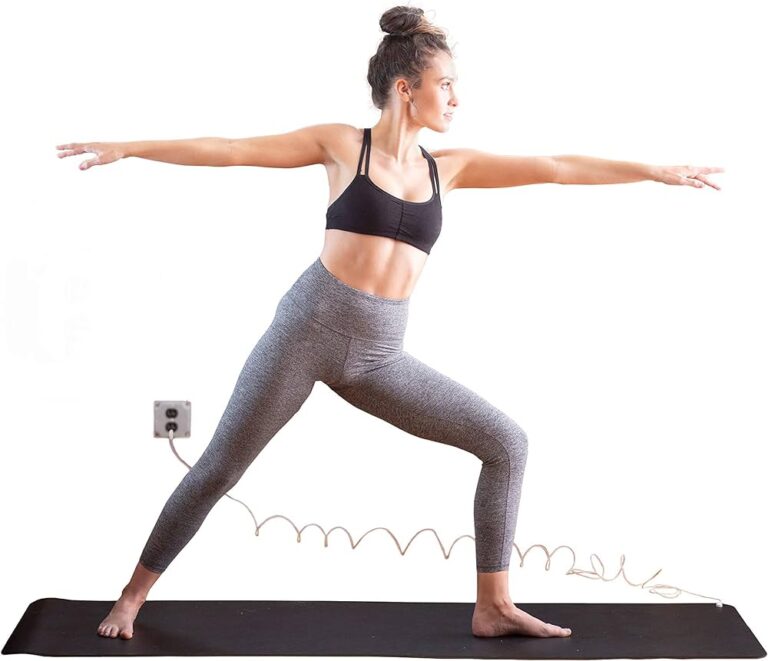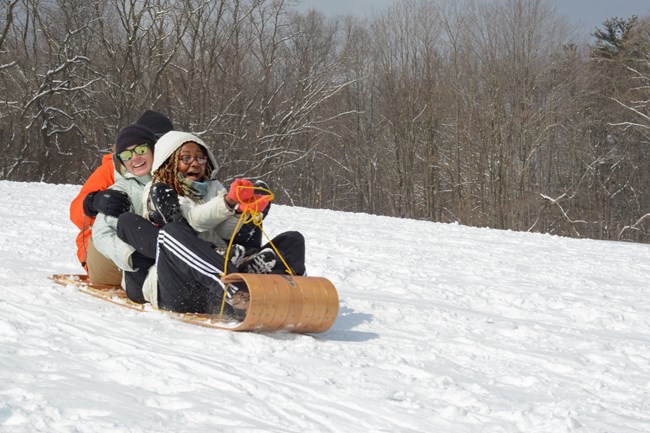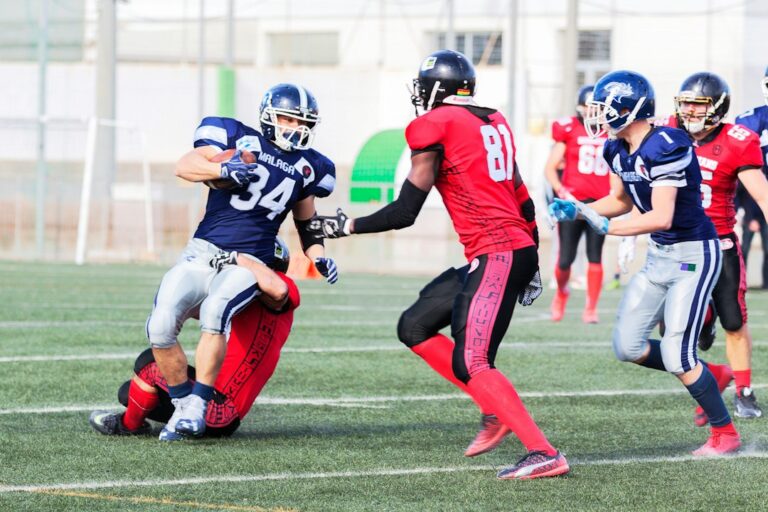Safety is a crucial aspect of any sport, and stick sports are no exception. Whether it’s field hockey, lacrosse, or ice hockey, these sports involve the use of sticks and can pose potential risks and dangers to players. It is important for athletes to understand the importance of safety in stick sports and take necessary precautions to protect themselves from injuries.
Stick sports require players to use sticks to handle and shoot the ball or puck. This involves quick movements, physical contact, and high-speed actions. Without proper safety measures, players are at risk of sustaining serious injuries such as concussions, fractures, sprains, and cuts. These injuries can have long-lasting effects on an athlete’s physical health and overall well-being.
Essential Protective Gear for Stick Sports: What Every Player Should Wear
To ensure safety in stick sports, it is essential for every player to wear the necessary protective gear. This gear is designed to minimize the risk of injuries and provide adequate protection during gameplay. The following is a detailed list of the essential protective gear for stick sports:
1. Helmet: A helmet is crucial in protecting the head from potential impacts and reducing the risk of concussions. It should fit properly and have a face mask or cage to protect the face.
2. Mouthguard: A mouthguard helps protect the teeth, jaw, and tongue from impact during stick sports. It should be properly fitted and worn at all times during gameplay.
3. Gloves: Gloves provide protection for the hands and fingers while allowing players to maintain a firm grip on the stick. They should be padded and offer flexibility for ease of movement.
4. Shin Guards: Shin guards protect the lower legs from impacts and slashes from sticks or balls/pucks. They should cover the entire shin area and fit securely.
5. Shoulder Pads: Shoulder pads provide protection for the shoulders, collarbone, and upper body. They should fit snugly and offer adequate padding.
6. Elbow Pads: Elbow pads protect the elbows from impacts and falls. They should cover the entire elbow joint and provide cushioning.
7. Athletic Cup: An athletic cup is essential for male players to protect the groin area from potential impacts.
8. Cleats or Skates: Proper footwear is important for maintaining stability and preventing slips or falls on the field or ice.
The Importance of Proper Warm-Up and Stretching in Stick Sports
Proper warm-up and stretching routines are crucial in stick sports to prepare the body for physical activity and reduce the risk of injuries. Warming up increases blood flow to the muscles, improves flexibility, and enhances overall performance. Here are some benefits of warming up and stretching before playing stick sports:
1. Increased Flexibility: Stretching helps improve flexibility, which is important for executing movements such as stick handling, shooting, and running. It allows players to move more freely and reduces the risk of muscle strains or pulls.
2. Injury Prevention: Warming up increases blood flow to the muscles, making them more pliable and less prone to injury. It also helps activate the muscles and joints, preparing them for the demands of gameplay.
3. Improved Performance: A proper warm-up routine can enhance an athlete’s performance by increasing their range of motion, agility, and reaction time. It allows players to perform at their best and reduces the risk of making mistakes due to stiffness or lack of preparation.
To effectively warm up before playing stick sports, athletes should engage in activities that increase heart rate and body temperature, such as jogging or jumping jacks. They should also incorporate dynamic stretches that mimic the movements they will be performing during gameplay, such as lunges or arm circles.
Stick Sports Safety Rules: Understanding and Following the Guidelines
| Stick Sports Safety Rules | Metric |
|---|---|
| Understanding the Guidelines | Number of players who have read and understood the safety guidelines |
| Following the Guidelines | Number of players who have followed the safety guidelines during gameplay |
| Protective Gear | Percentage of players who wear appropriate protective gear during gameplay |
| Reporting Injuries | Number of injuries reported by players during gameplay |
| Enforcement | Number of penalties given to players who violate safety rules during gameplay |
Stick sports have specific safety rules and guidelines that players must understand and follow to ensure their safety and the safety of others. These rules are in place to prevent injuries and maintain fair play. It is important for players to familiarize themselves with these rules and adhere to them at all times. Some common safety rules in stick sports include:
1. No High Sticks: In many stick sports, it is not allowed to raise the stick above shoulder level. This rule is in place to prevent accidental hits to the face or head.
2. No Slashing: Slashing refers to intentionally hitting an opponent’s stick or body with excessive force. It is a dangerous action that can cause injuries and is strictly prohibited.
3. No Checking from Behind: Checking from behind involves hitting an opponent from behind, which can lead to serious injuries, especially if the player is caught off guard. It is important to always be aware of the position of other players on the field or ice.
4. No Tripping or Hooking: Tripping or hooking an opponent’s stick or body is not allowed as it can cause players to lose balance and fall, resulting in injuries.
5. Respect for Officials: Players should always respect the decisions made by officials and avoid arguing or engaging in confrontations with them. Disrespectful behavior can lead to penalties and potential ejections from the game.
It is important for players to understand that not following these safety rules can have serious consequences, both for themselves and for others. By adhering to these guidelines, players can ensure a safe and enjoyable playing experience for everyone involved.
Common Injuries in Stick Sports and How to Prevent Them
Despite taking precautions and following safety rules, injuries can still occur in stick sports. It is important for players to be aware of the most common injuries and take steps to prevent them. Some common injuries in stick sports include:
1. Concussions: Concussions are a common injury in stick sports due to the potential for impacts to the head. To prevent concussions, players should always wear a properly fitted helmet and avoid dangerous plays that may lead to head injuries.
2. Sprains and Strains: Sprains and strains can occur in stick sports due to sudden movements, falls, or collisions. To prevent these injuries, players should ensure they are properly warmed up and stretched before playing. They should also maintain good balance and body control during gameplay.
3. Fractures: Fractures can occur in stick sports due to direct impacts or falls. To prevent fractures, players should wear appropriate protective gear, such as shin guards and shoulder pads. They should also be aware of their surroundings and avoid dangerous plays that may lead to falls or collisions.
4. Cuts and Bruises: Cuts and bruises can occur in stick sports due to contact with sticks or other players. To prevent these injuries, players should wear appropriate protective gear, such as gloves and shin guards. They should also be mindful of their stick handling techniques to avoid accidental hits.
To prevent injuries in stick sports, players should prioritize safety by wearing the necessary protective gear, following safety rules, and maintaining good technique and body control during gameplay. It is also important to listen to your body and take breaks when needed to avoid overexertion or fatigue.
Tips for Safe Stick Handling and Shooting Techniques

Safe stick handling and shooting techniques are essential in stick sports to minimize the risk of injuries. These techniques involve proper body positioning, grip, and control of the stick. Here are some tips for safe stick handling and shooting:
1. Proper Grip: Hold the stick with both hands, ensuring a firm grip without excessive tension. The top hand should be placed near the top of the stick for better control.
2. Body Positioning: Maintain a balanced stance with knees slightly bent and feet shoulder-width apart. This allows for better stability and control while handling the stick.
3. Stick Control: Keep the stick close to the body and use small, controlled movements to handle the ball or puck. Avoid swinging the stick wildly, as this can lead to accidental hits or loss of control.
4. Eye on the Ball/Puck: Keep your eyes on the ball or puck at all times to maintain better control and awareness of your surroundings. This helps prevent accidental hits to other players or objects.
5. Controlled Shooting: When shooting, aim for accuracy rather than power. Use controlled movements and proper technique to ensure a safe and accurate shot.
By practicing safe stick handling and shooting techniques, players can minimize the risk of injuries while still maintaining their performance on the field or ice.
Keeping a Safe Distance: How to Avoid Collisions and Accidents
Maintaining a safe distance from other players is crucial in stick sports to avoid collisions and accidents. Stick sports involve physical contact and high-speed actions, making it important for players to be aware of their surroundings and maintain proper spacing. Here are some tips for avoiding collisions and accidents on the field:
1. Communication: Effective communication with teammates is key in stick sports to avoid collisions. Use verbal cues or hand signals to indicate your position or intentions on the field.
2. Spatial Awareness: Be aware of other players’ positions on the field or ice at all times. This includes both teammates and opponents. Maintain a safe distance from other players to avoid accidental collisions.
3. Anticipation: Anticipate the movements of other players and adjust your own movements accordingly. This helps prevent sudden collisions due to unexpected changes in direction.
4. Avoiding Dangerous Plays: Be mindful of dangerous plays that may lead to collisions, such as checking from behind or slashing. Avoid engaging in these actions and prioritize fair play and safety.
5. Controlled Speed: Maintain control of your speed while moving on the field or ice. Avoid excessive speed that may make it difficult to stop or change direction, leading to potential accidents.
By following these tips and maintaining a safe distance from other players, athletes can reduce the risk of collisions and accidents in stick sports.
Playing in Different Weather Conditions: Safety Precautions to Take
Playing stick sports in different weather conditions requires additional safety precautions to ensure the well-being of players. Extreme heat, cold, rain, or snow can pose unique challenges and risks. Here are some safety precautions to take when playing in different weather conditions:
1. Extreme Heat: In hot weather, players should stay hydrated by drinking plenty of water before, during, and after gameplay. They should also wear lightweight and breathable clothing to prevent overheating. Taking regular breaks in shaded areas and applying sunscreen can also help protect against sunburn and heat-related illnesses.
2. Extreme Cold: In cold weather, players should dress in layers to stay warm and protect against frostbite or hypothermia. Wearing thermal clothing, gloves, hats, and scarves can help retain body heat. It is also important to take breaks indoors or in heated areas to prevent prolonged exposure to extreme cold.
3. Rain: Playing in the rain can make the field or ice slippery, increasing the risk of falls or injuries. Players should wear appropriate footwear with good traction to maintain stability. It is also important to dry off equipment and clothing between games to prevent discomfort and potential health issues.
4. Snow: Playing in the snow can be fun but also poses risks such as reduced visibility and slippery surfaces. Players should wear waterproof clothing and footwear to stay dry and warm. They should also be cautious of hidden obstacles under the snow that may cause falls or injuries.
It is important for players to prioritize their safety when playing in different weather conditions by taking appropriate precautions and being aware of the potential risks associated with each condition.
First Aid for Stick Sports Injuries: What Every Player Should Know
In stick sports, injuries can still occur despite taking precautions. It is important for players to have basic knowledge of first aid techniques to provide immediate care for themselves or their teammates. Here are some basic first aid techniques for stick sports injuries:
1. Cuts and Scrapes: Clean the wound with mild soap and water, and apply an antiseptic ointment. Cover the wound with a sterile bandage or dressing to prevent infection.
2. Sprains and Strains: Use the RICE method – Rest, Ice, Compression, and Elevation – to reduce swelling and pain. Rest the injured area, apply ice wrapped in a cloth for 15-20 minutes every 2-3 hours, use a compression bandage to reduce swelling, and elevate the injured area above heart level if possible.
3. Fractures: If a fracture is suspected, immobilize the injured area by splinting it with a rigid object such as a stick or board. Seek immediate medical attention for proper diagnosis and treatment.
4. Concussions: If a player experiences a blow to the head or exhibits symptoms of a concussion, such as dizziness or confusion, they should be immediately removed from play and evaluated by a medical professional. Rest and avoid physical activity until cleared by a healthcare provider.
It is important to note that these first aid techniques are temporary measures and professional medical attention should be sought for more serious injuries or if symptoms persist.
The Role of Coaches and Officials in Enforcing Stick Sports Safety Rules
Coaches and officials play a crucial role in ensuring player safety in stick sports. They are responsible for enforcing safety rules, monitoring gameplay, and addressing any safety concerns that may arise. It is important for players to communicate their safety concerns to coaches and officials so that appropriate actions can be taken. Here are some tips for players to communicate safety concerns effectively:
1. Respectful Communication: Approach coaches and officials with respect and professionalism when discussing safety concerns. Clearly articulate the issue and provide any relevant information or evidence to support your concern.
2. Team Support: If multiple players have the same safety concern, it can be more effective to address the issue as a team. This shows unity and emphasizes the importance of the concern.
3. Follow Chain of Command: If coaches or officials do not address the safety concern adequately, players can escalate the issue to higher authorities, such as league administrators or governing bodies. It is important to follow the established chain of command to ensure that concerns are properly addressed.
Coaches and officials should prioritize player safety and take immediate action to address any safety concerns that may arise during gameplay. They should also provide clear instructions on safety rules and guidelines, and ensure that players are aware of the consequences of not following these rules.
Safety should always be a top priority in stick sports. The potential risks and dangers involved in these sports make it crucial for players to take necessary precautions to protect themselves from injuries. By wearing the essential protective gear, warming up properly, following safety rules, and practicing safe techniques, players can minimize the risk of injuries while still enjoying their game. Coaches and officials also play a vital role in ensuring player safety by enforcing rules and addressing safety concerns. By prioritizing safety in stick sports, athletes can have a safe and enjoyable playing experience.
If you’re interested in learning about the historical significance and interesting origins of various sports, you should check out this fascinating article on Off to Sports. It explores the rich history behind different sports and how they have evolved over time. From ancient games to modern-day favorites, this article provides a comprehensive overview of the sports that have captured our attention throughout history. Discover the origins of your favorite sports and gain a deeper appreciation for their cultural and historical significance. Read more here.
How Does Choosing the Right Protective Gear Enhance Stick Sports Safety?
Choosing the right stick sports gear is essential for maximizing safety and performance. Properly fitting helmets, padding, gloves, and footwear reduce the risk of injury during intense gameplay. High-quality gear offers durability and ensures players can focus on their movements with confidence, creating a safer environment for every match or practice session.





